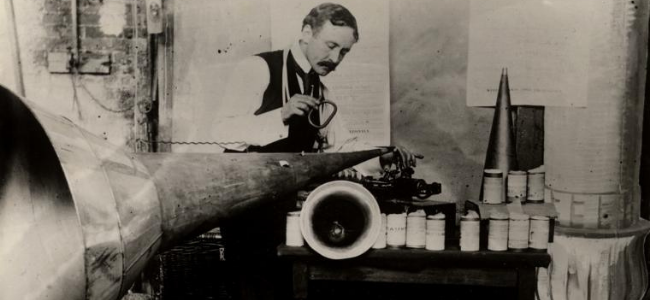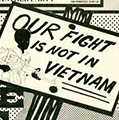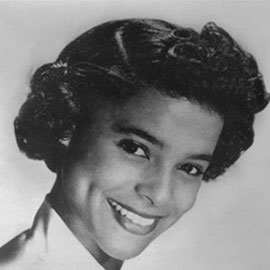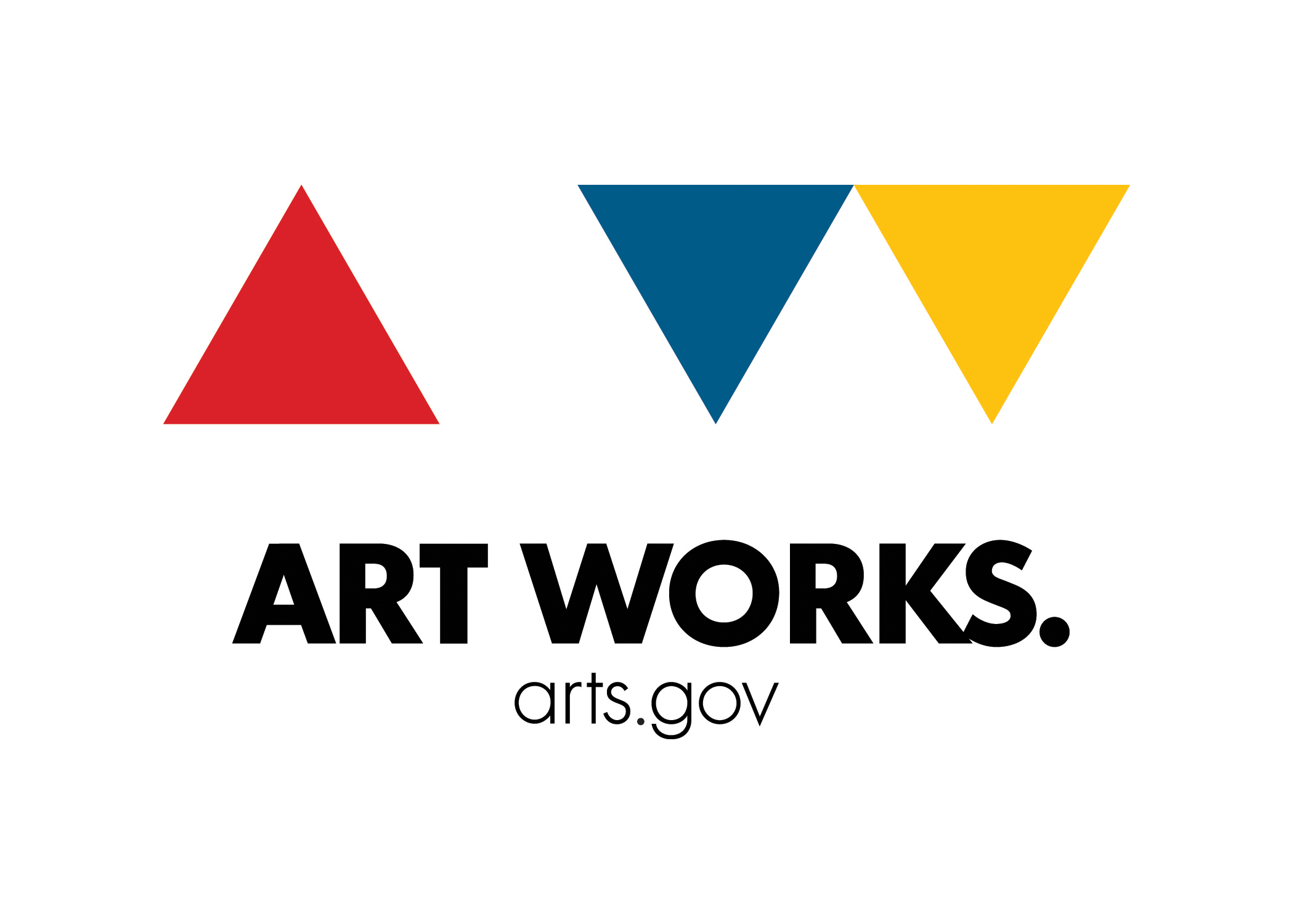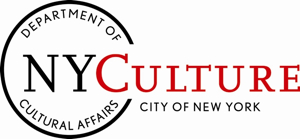Archival Audio: Radiotopia
Joe: From PRX’s Radiotopia, this is Radio Diaries. I’m Joe Richman. This year as a pandemic project, I pulled out an old suitcase that had not been opened in years. It was full of cassette tapes that I recorded in my twenties. My college radio show, a love song to an old girlfriend and this one.
Archival Joe: Hi, it’s me again.
Joe: It was the first recording I ever made on my first ever tape recorder. I was 23 on a solo cross-country road trip.
Archival Joe: I’m in downtown Memphis, just finished eating a bunch of ribs,
having a couple beers, playing a little pool. And what do you know? It’s five
minutes after midnight.
Joe: I was driving backroads, sleeping in parking lots or camping in the woods, playing a guitar that I bought at a pawn shop, trying to channel Woody Guthrie, and talking to the “future me.”
Archival Joe: So, anyway, Joe, when you hear this later, let me just, uh, set the scene for you here. Hear those birds and the crickets in the background in the woods someplace. Southern Kentucky with a big sky full of stars. Man, you know, being in the woods alone is scary.
Joe: One thing that I hear in all these tapes is the sound of someone with a new toy who isn’t quite sure what to do with it. It’s a collection of random, uneventful moments. The things the brain is programmed to forget to make room for new things. But listening 30 years later brings me right back to that chapter of my life.
Joe: We all know the experience of looking at an old photograph or home videos, but sound waves literally get inside us in a way that images don’t. To me, an audio recorder is the closest thing to a time machine that we’ve ever invented. Today on radio diaries, we’re going back even further than my first audio recorder to the first audio recorder. This episode is a special collaboration with Chris Hoff and Sam Harnett of The World According to Sound. They’re going to take us through the history of people recording strange, random, and beautiful things for the future us. First stop, the story of a man at the turn of the century trying to make the best possible live recording he could: the grandfather of bootlegging, Lionel Mapleson. Here’s Sam with a story.
Sam: It’s 1902, a damp March day in New York City. Inside the Metropolitan Opera House, act three of the Valkyries is just beginning.
Archival audio: “Ride of the Valkyries” plays
Sam: The music rings out and then disappears, like all sound does.
Archival audio: “Ride of the Valkyries” continues
Sam: But this evening is different. The performance will be heard again.
Archival Audio: “Ride of the Valkyries” continues, and concludes.
Sam: That’s because there’s a man crouched under the stage operating a wooden contraption with a big metal horn on it. That man is the librarian of the Metropolitan Opera, Lionel Mapleson. Mapleson was trying to make the highest quality live recordings of opera. His quest started when he bought that wooden contraption and horn two years earlier. He wrote about the purchase in his diary,
Chris: Tuesday, March 20th, 1900. Today, my long cherished desire is satisfied. I purchased an Edison home phonograph for thirty dollars. People there all spent a merry evening with the beautiful instrument.
Sam: Not only could the phonograph play music off wax cylinders, it can actually record things too. The very next day, Mapleson got more parts for his machine from the Batini phonograph laboratory. They advertise their product as a machine with a soul
Archival audio: a machine with a soul
Sam: That can revive the past and bring back the absence
Archival audio: and bring back the absent
Sam: Sound had always been ephemeral. But here was a machine that could do the unthinkable. Music and voices, disembodied voices would come out of the machine’s horn. Moments in time were suddenly fixed and accessible whenever.
Chris: Thursday, March 22nd. For the present, I neither work properly nor eat nor sleep. I’m a phonograph maniac, always making or buying records.
Sam: The opera where Mapleson worked was the perfect subject for his mania. He wanted to see if he could capture the beauty of a live performance.
Archival audio: music plays
Sam: But Mapleson was an uncharted territory. He was likely the first person to try and systematically record live performances in the same venue. He had to experiment. He tried attaching different sized recording horns to his machine. At one point, he had one as large as a pony. Mapleson first put the machine right at the front of the stage. Then he moved up to the catwalks. During the performances, he’d be up there above the audience with his machine, trying to get the clearest sound of the singers and musicians below.
Archival Audio: opera music plays
Sam: Back when they were first made, Mapleson’s recordings sounded much cleaner, but they’re now 120 years old. There’s been a lot of wear and tear, which accounts for much of the scratchiness and roughness that you hear.
Archival audio: “Bridal Chorus” by Richard Wagner
Sam: Over the course of three years, Mapleton made as many as 200 recordings of the opera house. He collected famous singers of the era like Georg Anthes, Lucienne Breval, Jean de Reszke, Johanna Gadski who’s in this recording.
Archival Audio: Johanna Gadski singing
Sam: Some of his recordings would be the only surviving audio of these singers.
Archival Audio: Johanna Gadski singing
Sam: Mapleson wasn’t alone. People around the country were beginning to buy phonographs and recording everything from their barking dogs and family gatherings to folk music, gospel and vaudeville acts. Companies got involved and record labels grew. By 1923, over 400,000 commercial records would be made and sold in America.
Sam: Thanks to Mapleson, we can listen to opera singers and performances from the turn of the century. But in his recordings, we can hear more than that. We can hear the way people tinkered and experimented with this new media and for early recorders, like Mapleton, it wasn’t about money or some professional obligation, but just about trying to capture the beauty of a sound before it disappeared forever.
Joe: The reason we came to know about this whole Mapleson story is that there’s some big news in the world of old sounds. Because of a new law, the Music Modernization Act, all commercial recordings released before 1923 are going to enter the public domain on January 1st, 2022.
Joe: That’s tens of thousands of recordings. In anticipation, archivists around the country had been digitizing and uploading this commercial audio along with lots of eccentric and amateur recordings, making it all more accessible and available to the public. It’s their big moment to showcase all this wonderful material they’ve been preserving for all these years. This moment inspired Chris Hoff and Sam Harnett to make a live listening event to celebrate and bring these old sounds to life. And we asked them if they would produce a version for us.
Joe: This isn’t a typical radio story. It’s kind of like a sonic tour and the World According to Sound takes their audio pretty seriously. For their live shows, they even mail you an eye mask to wear while listening. More on how you can get your own eye mask at the end of our show. So stop washing the dishes or whatever else you’re doing. Get comfortable. We recommend listening with headphones.
Joe: This is a story told in three parts from the 1850s, all the way to 1923. Here’s Chris starting the show like they always do with a little flourish from a giant pipe organ.
Archival Audio: MEDLEY: footsteps walking, stool being moved across floor, organ playing, operatic singing, weather broadcast.
Chris: Part one: first sounds.
Sam: Or the origins of recording technology: experiments from 1850 to 1890.
Archival Audio: early guitar recording
Chris: 1853 or 1854. One of the first recordings ever made: notes, played on a guitar.
Archival Audio: early guitar recording
Chris: Édouard-Léon Scott used his invention, “The Phonautograph,” to record them on a piece of paper. Then he recorded a human voice.
Archival audio: guitar played, human voice.
Chris: 1857, a reading of the Lord’s prayer.
Archival audio: reading of the Lord’s prayer (scratchy sound, comparable to a jacket zipper being pulled up)
Chris: A cornet solo from the same year.
Archival audio: cornet solo (a major scale being played)
Chris:1860. The first recording that’s recognizable as a human voice. A man singing Eau Clair de Lune.
Archival audio: Eau Clair de Lune.
Chris: 1877. Thomas Edison used his new invention, the phonograph, to record sounds on spinning cylinders of tinfoil. He recited Mary Had a Little Lamb.
Archival audio: Mary Had a Little Lamb (some words audible but indecipherable)
Chris: 1878. One of the first field recordings ever made.
Archival audio: whirring sound
Chris: It’s an elevated train in New York, recorded from 40 feet away.
Archival audio: whirring sound of train continues.
Sam: 1885. Alexander Graham Bell makes a recording on wax. He lists a series of numbers, then says, “This record has been made by Alexander Graham Bell.”
Archival audio: Alexander Graham Bell recording
Chris: June 29th, 1888. A choir of 4000 sing Handel at the Crystal Palace, London
Archival audio: choir singing “Handel” (repetitive whirring can be heard in background, choir is faint)
Chris: 1889. Robert Browning records the first poem ever.
Archival Audio: Robert Browning recording
Chris: And he messes up his own lines. He says, “I am terribly sorry that I can’t remember my own verses.”
Archival Audio: I’m terribly sorry I can’t remember my own verses.
Chris: Part two: home recordings.
Sam: Or how people began making amateur recordings once the consumer phonograph became affordable: 1890 to 1911.
Archival Audio: weather report
Chris: We know what the weather was like in Omaha on January 10th, 1909.
Archival Audio: Well, the weather is very cold as we have some snow. The mercury has been below zero all day, as for several days the past week.
Chris: We know sometime between 1890 and 1900, there lived a professor named Slocum, who was not very good at the tin whistle, but enjoyed playing Adeste Fidelis.
Archival Audio: recording of tin whistle rendition of Adeste Fideles.
Archival audio: At 11:00 AM on January the 22nd, 1911, I came to the door of the Gothic hotel…
Chris: And we know that this gentleman who went to the Gothic hotel in New York on January 22nd, 1911 had a very pleasant stay.
Archival Audio (unidentified man recording self): An elegant dinner was served, after which had commenced two weeks of the most enjoyable expeditions…
Chris: People recorded themselves calling their dogs.
Archival audio: (whistle sound) Rusty! Rusty!
Archival audio: kazoo playing
Chris: Playing the kazoo.
Chris: And describing their family life.
Archival audio (Unidentified person): Ladies and gentlemen, I will now show you what fun it is to take care of children.
Archival audio: child crying
Archival audio: Father or mother mocking child crying
Chris: Someone even dragged a phonograph out to a farm and made one of the earliest surviving recordings of barnyard animals.
Archival Audio: pigs snorting, chickens clucking
Chris: Based on the number of blank cylinders sold, archivists estimate that there could have been as many as several hundred thousand of these home recordings. These were fragile, brittle, wax cylinders. Most were lost or destroyed. A few survived from that librarian and amateur opera recordist Lionel Mapleson.
Archival Audio (Unidentified man): Hello darling, we’re in the library in the day of April 18th, 1909. We’ve just come from a very breezy walk on Brooklyn Bridge. Goodbye.
Archival (unidentified woman): Goodbye!
Chris: Part three: selling sounds.
Sam: Or “how record labels started cashing in on sound, from instructional and how to records to then most enduring sonic commodity: music. 1902 to 1923.
Archival Audio: The international morse alphabet is made up of dots, dashes and paces or silences. The following are dots.
Chris: Morse code training.
Archival Audio: And these are dashes.
Chris: 1922. Columbia Records.
Archival Audio (unidentified man): Dashes are three times the length of dots. The most frequently used letter in the alphabet is the letter “E” and this is represented by a single dot.
Archival audio: one beep
Archival audio (unidentified man): Letter E again, three times.
Archival audio: three consecutive beeps
Archival audio (unidentified man): German lesson number two.
Chris: Language lessons between 1900 and 1910.
Archival Audio (unidentified man): German lesson number 16. (footsteps can be heard in the background)
Archival audio (unidentified man): Number one, as used in the army and navy of the United States…
Chris: 1902. Edison Records.
Archival audio: First call on bugle.
Archival audio (unidentified man): Assembly!
Archival audio: Bugle call.
Archival audio (unidentified man): Exercise number one. Dan directs Arms at the side. At the count of one, close hands and place the fists on the chest. At the count of two, push arms straight above the head. At the count of three, lower arms sideways, even with the shoulders, at arm’s length. At the count of four, lower the arms in starting position. Stand straight. Arms at sides. Ready. Begin! One up, out, down, one, up, out down, one, two, three four, one two three four, one, two…
Chris: And finally, a 12 part series of home exercise recordings. 1922. Victor Records.
Archival audio (unidentified man): One, up, out, down, one, up, out, down, one, two, three, four, one, two, three, four, one, two, three, four, one, up, out, down, one, two, three, four, one, two, three, four.
Archival audio: piano playing
Chris: More than 400,000 commercial recordings were sold before 1923. After all that experimentation, record labels landed on something that lots of people would buy: music.
Archival Audio: Bessie Smith, “Chicago Bound Blues”
Chris: Here’s “Chicago Bound Blues” by Bessie Smith. Released in 1923.
Archival Audio: Bessie Smith, “Chicago Bound Blues.”
Sam: There is one final part to this story. We heard the first technical experiments, the amateur home recordings, and finally, sound’s most enduring commodity, music, but we wouldn’t be able to hear much of this at all if it weren’t for the archivists who have saved and preserved this material for years.
Sam: This is my partner, Chris, at the New York Public Library. He’s visiting the library’s collection of recorded sound to meet archivist Jessica Wood.
Jessica Wood: So up here, we’ve got books and cylinders, primarily, and magazines.
Sam: The library has preserved the work of Lionel Mapleson, among other recordings.
Archival audio: organ music
Sam: Chris is standing right in front of the large, nondescript cabinet that holds over a hundred of Mapleson’s invaluable recordings.
Jessica: One of the most precious things in these cabinets are our so-called Mapleson cylinders.
Sam: Archivists have found cylinders and records at auctions, garage sales and stashed away in people’s attics. In the 1930s, the New York Public Library acquired the Mapleton records from a private collector and for decades since, they preserved the fragile wax cylinders from further cracking and degrading. Mapleson saved the sound from disappearing 120 years ago, and now archivists are saving the physical materials that allow us to listen to
those sounds, keeping them once again from disappearing.
Archival audio: woman singing opera music
Sam: In an archive like the New York Public Library, you are surrounded by all these records and cylinders, and they’re just sitting there, totally silent, but you know each one contains in it some captured sound, some moment fixed in time. What would it be like to hear each one? That thought gave us an idea to pull these recordings off shelves, out of the cabinets, from drawers and to let out the music hidden in each one. So for the next three minutes, sit back and enjoy the music.
Archival Audio: musical medley
Joe: This story was created by Sam Harnett and Chris Hoff of The World According to Sound. They’re performing a live audio show with many of these same recordings on January 6th. You can find out more details at theworldaccordingtosound.org. And if you get a ticket by the 28th of December, they’ll even mail you an eye mask and listening instructions.
Joe: Radio Diaries is produced by Nellie Gilles, Alissa Escarce, Mycah Hazel and myself. Stephanie Rodriguez does our marketing and our editors are Deborah George and Ben Shapiro. Special thanks today to the Library of Congress, the University of California Santa Barbara Cylinder Archive and the New York Public Library.
We’re part of Radiotopia, a collective of some of the best podcasts on the planet. You can find out more at radiotopia.fm and for more on Radio Diaries, visit radiodiaries.org. We’re supported by the National Endowment for the Humanities and by listeners, like you. One more thing before we go. Over the holidays, we invite you to take a few minutes to make a recording of a friend or a family member, or even yourself. Someday, you just may appreciate having your very own audio time machine. I’m Joe Richman of Radio Diaries. Thanks for listening.
Archival audio: unidentified baby crying, father mocking child crying.

